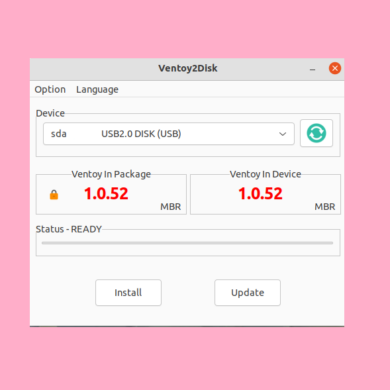

x86_64 version), enjoy the GUI.ĭon’t forget to close the “ Elevated Privileges” FM window! Double click the appropriate “VentoyGUI.xxx” program (usually the. Open that folder, right click an empty space and select “ Open as Root”, authenticate. This will create a new folder “ventoy-xxx”. Open with Archive manager (default), click “Extract” and select your preferred location (e.g. > Download the latest version of ventoy-xxx…, The GUI itself doesn't require installing.īe aware, Ventoy will occupy the whole USB drive, to circumvent see below for a Terminal install option. The Ventoy multi boot version on a USB drive (stick, HDD). Included in the download folder there is a beautiful GUI to install iso-files to the “Ventoy” partition and boot from this USB drive to get a boot menu to select which one to boot.

According to the BIOS, this flash drive did not exist.Ventoy is a multi-boot environment to boot different ISOs from one single USB drive. I tried to use dd to go ahead and write over everything, but unfortunately the program would just display a flashing cursor, then after a couple hours dd finished its work and said something like "/dev/sdb: unable to write", and even though it appeared to work i didn't get an image that could be read by my BIOS. The problem I've had over the past couple days, and the solution can be summed up as thus: i've tried to use dd to write a bootable image of fedora so i can add it to my hard drive, but i was getting a lot of error messages in terms of both my flash drives, and at times i was not able to use Disks (probably the best GUI paritioning tool in linux.) to fully format the flash drives. In the past, i resorted to using DVD-Rs with img-burn (a free and very limited program that works with Windows) in order to get linux up and running. The problem can't be dd, because it's the only program i've found so far that successfully writes boot images to flash drives. I've struggled with an issue over the past couple days of writing a bootable Fedora image over the past couple days with dd (a command line tool for writing/erasing data). MAYBE there is also a problem with the way devices get mounted to the Ubuntu file system. I feel like this is a catch-22, and sophisticated operating systems like Ubuntu or Windows should be able to recognize/analyze the nature of flash-drive data by default whether it's corrupted, a bootable image, etc. It seems like operating systems in general struggle with this, the data on the drives must be written properly to begin with for operating systems and the BIOS to be able to recognize them. Sorry if this question seems like gibberish to you, I am still a n00b in terms of general linux knowledge.


 0 kommentar(er)
0 kommentar(er)
